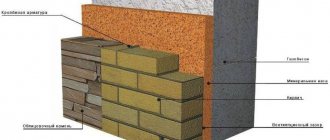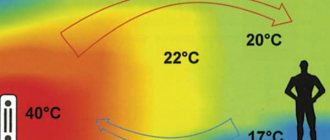Not all homeowners are aware of how the cost of services for the provision of thermal energy is formed. To many it seems unreasonably high. The tariff for thermal energy also increases annually, although the quality of this service remains at the same level. Does the number of emergency repairs on heating networks affect its price? Do technological improvements to citywide systems and replacement of pipelines have an impact?
In the article we will look in detail at how the tariff for thermal energy is formed in the Russian Federation, who sets and regulates it. Let's look at the functions of the corresponding counters.
Approval and regulation
Tariffs for thermal energy are approved by the REC (regional energy commission). In her work, she is based on a standard provision on the executive body of a Russian subject in the field of state regulation of tariffs, which was approved in accordance with Government Resolution No. 136 (2004).
In the Russian Federation, it is the Regional Energy Commission that is responsible for setting tariffs for thermal energy. The one that was generated and transmitted through heating networks. The commission also relies on various legal documents that are currently relevant.
Specific numbers
Let us look at the tariff examples that apply in the Moscow region. Here, 1 Gcal of heat energy, on average, is estimated at 1,534 rubles. Both in the Moscow region and throughout Russia, there is a noticeable tendency to increase tariffs for thermal energy. This is not an exceptional phenomenon. Along with them, tariffs for electricity, water supply, gas supply, etc. are rising.
In the Moscow region, residential heating tariffs remained constant for a long time. On average, this is 175 rubles per cubic meter. It is important to note that the price of the service also depends on the company providing it. Thus, owners of premises in which heat meters from MOEK are installed pay slightly more than homeowners with meters from Mosenergo.
Online heating calculation
Considering the relevance of the issue of the fairness of charging certain payments for utility services, as well as the low awareness of residents about the basic figures of general household consumption, tariff plans, etc., there are resources on the Internet that allow you to roughly estimate the amount of utility payments in real time. You must enter the following data into the online calculator form:
- year and month of calculation;
- calculation method - according to the standard or using instruments;
- the type of house, the year it was built, the area of the apartment, if the standard charging option is chosen;
- heat meter readings, if the “by instruments” option is selected.
This is important to know: Concession agreement for water supply facilities: sample
These online resources are regional, since tariffs are approved at the level of constituent entities of the Russian Federation, taking into account the length of the heating season, the severity of winters, deterioration of housing stock, etc..
Thus, the calculation of heating in an apartment depends on the installation of communal and apartment metering devices, as well as on the payment option - throughout the year or only during the heating season. For convenience, you can use online services taking into account the region where the house is located.
Why does the cost of the service vary?
Tariffs for heat energy are heterogeneous across Russia. Moreover, they can vary even within the same region. There are cases when people living on the same street pay completely different amounts for heating. What is this connected with?
The entire heat-conducting system of a settlement is divided into several sections. They can be owned by one or several companies. Each of these organizations is entitled to introduce its own tariffs. This is what causes the difference in payment for the same service.
Depending on what do heat supply companies set tariffs for the population? The cost of the service is influenced by the condition of the heating network and the wear of its pipeline. If the pipes in a particular section are old, which results in a high level of heat loss, the service provider can submit a request to the REC to increase tariffs for homeowners in certain buildings. Here both he and the state will not remain in the red. The costs will be paid by the population.
How is the cost of an apartment building calculated?
Calculation methods are formulas that take into account the main parameters:
- apartment area;
- heat consumption standard;
- approved tariff;
- duration of the heating season;
- meter readings, etc.
To clearly demonstrate the differences in formulas and methods, we allow the following parameter values:
- area – 62 sq.m;
- standard – 0.02 Gkl/sq.m;
- tariff – 1600 rub./Gkl;
- heating season coefficient – 0.583 (7 out of 12);
- readings of a common house meter - 75 Gkl;
- total area of the house – 6000 sq.m;
- the volume of thermal energy consumed in the past year – 750 Gcl;
- readings from an individual device in the apartment - 1.2 Gcl;
- the sum of readings of all meters in apartments is 53 Gkl;
- average monthly readings of apartment meters – 0.7 Gkl;
- the sum of average monthly readings of individual appliances around the house is 40 Gcl;
- The average monthly readings of a common house appliance are 44 Gcl.
By area
If an apartment building is not equipped with metering devices (neither collective nor individual), then in this case the fee is calculated by multiplying the area of the apartment, the consumption rate and the approved tariff. When paying evenly throughout the year, another multiplier is added - the ratio of the number of months of the heating season to the number of months in the year.
Then in the first case (when charging a fee only during the actual provision of the service), the owner will be presented with 62 * 0.02 * 1600 = 1984 rubles for payment. per month. If paid throughout the year, the amount per month will be lower and will be 62 * 0.02 * 1600 * 0.583 = 1156.67 rubles. However, for the year in both cases, approximately the same amount will be collected from the consumer.
According to the meter in the apartment
When installing communal and apartment meters in a house, the calculation formula consists of two steps:
- calculating the difference between the readings of a collective device and the sum from adding the readings of apartment devices;
- charging of fees taking into account the readings of an individual device, a share of general household expenses and the approved tariff.
So, if residents pay for heating services directly after the fact, i.e. during the heating season, they will be charged an amount in the amount of ((75-53)*62/6000+1.2)*1600=2118.40 rubles per month of payment. When paying for the entire calendar year, not the actual readings of the instruments are substituted into the formula, but their average monthly values. In this case, the homeowner will be issued an invoice every month with the same amount ((44-40)*62/6000+0.7)*1600=1186.13 rubles.
According to the common house meter
If a common building meter is installed in an apartment building, but there are no individual meters in the apartments, then the calculation formula changes slightly. It is the product of the device readings, the approved tariff and the quotient of the apartment area to the total area of the house. In this case, the owner will be required to pay 75*1600*(62/6000)=1240 rubles. in the current month.
If the residents of the house pay for heating throughout the entire calendar year, then the formula undergoes changes and becomes equal to the product of the area of the apartment, the approved tariff and the quotient of dividing the annual volume of heat by the number of months in the year and the total area of the house. In such a situation, the user will receive a monthly receipt for payment of 62*1600*(750/12/6000)=1033.33 rubles.
If you have a collective meter and have chosen the payment option throughout the year, in the first quarter of the new year an adjustment will take place taking into account the actual energy consumed for the previous period. This means that excess amounts paid will be charged or written off. To calculate them, the following formula is used:
volume of heat actually consumed per year*approved tariff*(area of the apartment/area of the house) – amount paid by the consumer for the year
If the value is positive, the amount will be added to the next payment; if it is negative, it will be deducted from the next payment amount.
Heat energy meters
These types of devices help you calculate the cost of monthly heating payments yourself, based on the readings taken from your meter. The owner of the thermal energy meter pays only for the service he received without additional charges from utility services. Some devices allow you to regulate the heating of the room both automatically (depending on the outside temperature) and manually.
According to the area of application, such devices are divided into industrial (household) and individual (apartment). Based on the principle of operation, mechanical and ultrasonic devices can be distinguished.
Energy consumption here is determined by vortex, electromagnetic, turbine measurements. Apartment units usually consist of a heat meter and a hot water meter (it acts as a coolant). As for ultrasonic devices, in this case, an emitter and a device that receives ultrasonic signals are installed on the pipe.
Installation of such meters in an apartment is impossible without obtaining appropriate permission from the management company. It can be obtained if you comply with all the technical conditions set by the Criminal Code. You should also choose a company that is certified for such activities.
During operation, the homeowner must take care of periodically checking his meter by specialists from Rostest, the service department of the device manufacturer.
Future prospects
Is it realistic to reduce heat tariffs? As analysts say, this will become possible only if intermediary companies stop repurchasing it from resource-supplying state enterprises.
In this case, the cost of heat energy and hot water supply will decrease again. Here the price of 1 Gcal of thermal energy will be set for each region, based on its economic situation and taking into account the climatic characteristics of the area.
In this state of affairs, residents of the same constituent entity of the Russian Federation will pay the same payment for heat energy at uniform tariffs established for the region, republic, locality, etc.
How to switch to the “alternative boiler house” method: algorithm
Each municipality independently decides whether to switch to the “alternative boiler house” mechanism or not. The transition algorithm consists of four stages.
- Assessing the characteristics of the heat supply market, studying price consequences. This is the task of the municipality and the ETO. If the decision is positive, you need to enlist the support of the authorities of the subject and submit an application to the Ministry of Energy of the Russian Federation to classify the municipality as a heat supply price zone.
- Verification of documents and assessment of consequences for the region. This is a joint task of the Ministry of Energy, the Ministry of Construction and the Federal Antimonopoly Service. Next, the departments formulate a proposal to classify (or not classify) a municipal entity into the heat supply price zone for the Government of the Russian Federation.
- Transition period. Begins if the proposal is approved by the Government of the Russian Federation. During the transition period, the previous price regulation is maintained (Article 2, Part 4, Article 23.3 of the Heat Supply Law).
- Updating schemes and agreeing on unregulated heat prices with consumers and signing an agreement. These procedures are given seven months.
The new heat supply model is considered implemented from the moment the maximum price level for heat energy is approved by the tariff authority of the constituent entity of the Russian Federation.
Types of tariffs for organizations
Tariffs for thermal energy come in several varieties. Let's look at them.
The first is for thermal energy (that is, steam). They are installed by resource-supplying institutions that directly generate heat using their own heat sources. Similar tariffs for thermal energy for the population and enterprises are graded according to the types of its generation:
- Produced by boiler houses for heat supply purposes.
- Generated by power plants. Here production is carried out in a combined mode. That is, both electrical and thermal energy are generated simultaneously.
The second type of tariffs is for the transmission of thermal energy. Such tariffs are set by organizations that own (for example, by right of ownership) certain sections of heating networks.
Types of tariffs for consumers
As for end consumers, for them the calculation of the cost of heat supply depends only on the tariffs for thermal energy approved by the Regional Energy Commission. Their formation depends on the waste of institutions supplying heat to the population. It also takes into account payments to third-party organizations and other intermediaries under contracts for the transmission of this kind of energy through heating networks. That is, under contracts for its transportation.
In addition, the Russian Federation also approves tariffs for coolant (chemically purified water) and heated components for hot water.
How the tariff for heating an apartment is determined
Recently, residents of apartment buildings have had many questions about heating tariffs. And this is not surprising, because the largest part of the total utility bills is the cost of heating.
For central heating of multi-apartment residential buildings, thermal energy is supplied by specialized heat supply organizations, the tariffs for which are approved by the regional energy commission. Tariffs remain unchanged until the next tariff regulation.
Often, residents of apartment buildings confuse the payment for heating 1 square meter of area, which is billed to them, with the tariff set by the competent authorities. It is worth paying attention to the fact that the payment for heating is just a calculated value and depends directly on the amount of thermal energy spent on heating.
Examples of calculating payment for heating services
So, how do the competent authorities calculate the heating payment and the amount of thermal energy consumed? There are two options here:
• If there is a metering device, the volume of thermal energy is determined by the meter in accordance with current legislation. Then the amount of payment for heating is determined using the following formula: [the amount of thermal energy expended] is multiplied by the value of the current tariff. If a common house heat meter is installed, the amount of energy consumed is determined for the previous year. It does not matter whether part of the year or the whole year of thermal energy consumption was taken into account by the meter.
If a common house meter was used for part of the year, then for the remaining period of time the volume of thermal energy is calculated according to the terms of the contract with the energy supply organization. Once the amount of energy consumed per year has been determined, it is divided by the total area of the apartment building, including non-residential premises that are not common property. The result is the value of thermal energy consumption per 1 square meter of total area. For clarity, let’s imagine the following situation: the amount of thermal energy consumed per year was 990 Gcal. The total area of premises in an apartment building is 5,500 square meters (excluding common areas).
The amount of thermal energy consumption per 1 square meter of area in this case will be: (990 / 5500) / 12 = 0.015 Gcal/m2 per month. Since the amount of thermal energy consumed is divided into 12 months, this value must be accepted for payment every month throughout the year, and not just during the heating period.
Now let’s calculate the heating fee for the end consumer, that is, a resident of an apartment building. According to the formula, Vt × Tt = average monthly volume of thermal energy consumption for heating for the previous year (Gcal/sq. m) × thermal energy tariff established in accordance with the current legislation of the Russian Federation. Then we multiply the resulting figure by the total area of the room.
Making calculations
Calculation of tariffs for thermal energy is a rather complex, labor-intensive and time-consuming process. It requires the formation, collection, and provision of many documents. They are sent by resource supply companies to the REC.
The documentation itself is subject to strict requirements. It must be numbered, collected in brochures, and certified with visas of the responsible persons. This is especially true for analytical data.
All documents to be sent for tariff calculations to the REC can be divided into the following categories:
- Are common.
- Technical specifications.
- Economic documentation.
Let's look at the contents of each category in detail.
General documentation
In order to formulate full and preferential tariffs for thermal energy for the population and organizations, REC needs to analyze a whole range of documentation from resource supply companies.
The general category of such documents includes the following:
- Title documentation for land plots, equipment, structures, buildings that are involved in heat supply processes.
- Copies of statistical accounting reports for the previous year, as of the last reporting date.
- Information on previously established heat energy tariffs.
- Calculated information on the useful supply of thermal energy, including losses in networks and the consumption of thermal energy for one’s own purposes and needs.
- Data on the connected load for heating, ventilation, hot water supply.
- Economically justified expenses for heat generation, calculation of the enterprise’s gross profit. This type of information must be generated in accordance with methodological instructions for calculating tariffs in the Russian Federation (approved by FTS Order No. 20-e/2 in 2004).
- The company's investment program with a breakdown of the amounts and sources of financing for its activities.
- An application, certified by the signature of the manager, on the review of documentation, approval of the heat energy tariff, indicating the method by which it was regulated.
What is the procedure for calculating fees in MKD according to standard 354 of the Resolution?
If there are several payment systems for the same utility service, and in addition, the provision of this benefit has the property of non-excludability (that is, it is impossible to exclude individual users from consuming this service), then it is necessary to invent ways to properly account for its expenditure in order to no one was forced to overpay for the amount of service (in our case, heat) that was not actually consumed.
In accordance with the amendments to the Rules for calculating heat consumption (No. 354), depending on the various combinations of the presence of heat consumption meters, there are 4 different options for how to calculate the payment for consumed heat for each of the responsible tenants of the apartment building, which are described by four formulas.
The resulting indicator of the formula is the amount of monthly deductions for using the service . A detailed examination of these formulas will allow you to understand how to check the correctness of the fee calculation.
If neither communal nor individual metering devices are installed
Here, payment for consumed heat in an apartment is calculated as a result of a combination of three parameters:
- the current standard (approved by the state administration of the region), which determines exactly how much energy (Gcal) is required to heat your home (1 m2) per month;
- the current tariff for the cost of real and conditional gigacalories;
- total area of the apartment (balconies and other unheated spaces are not taken into account here).
The formula for monthly consumption is as follows:
| Pi=Si x N x T |
(Formula 1), where:
- Si is the total area of i residential or non-residential premises.
- N is the standard consumption of heating utility services per month.
- T – tariff for thermal energy approved by the regional administration.
The law provides for the possibility of charging for heating:
- as during only the heating season itself;
- and throughout the year (is it legal to pay for heating in the summer?).
The decision on how the heat supply bill will be calculated is made by the regional authorities (depending on the fullness of the budget for the repair and operation of heating networks). But if a decision is made to charge according to the standard throughout the year evenly (that is, in the summer, when heating is not in demand, too), then correction factors are applied in the calculation formula.
Moreover, if payment is made according to standard indicators, and the house is equipped with a common heat meter, then with uniform accrual, the same amount will be charged to you both in winter and in the summer months.
Thus, a situation may arise when the number of gigacalories consumed according to the standard exceeds their actually used value. In this case, an adjustment payment must be made in favor of each responsible tenant based on the results of actual heat consumption.
The adjustment formula for each apartment is as follows:
Pcor. = ((Pi x n) – Pcount.) / Stotal. * Si (Formula 2), where:
- Si - total area i of residential or non-residential premises;
- Stotal - the total area of the entire residential building;
- n is the number of months for which the recalculation is made;
- Pi is the accrued amount for i residential or non-residential premises for n months;
- Pcount. – the amount of heat consumption according to the common house meter for n months of consumption.
If payment does not occur evenly throughout the year, but only for the billing period (that is, for each month individually), then Formula 1 is used, where the standard indicators correspond to a given month (the most common calculation option).
ODPU is present, but IPU is not
An important amendment to this formula is that not a single apartment in the building is equipped with an individual heat meter:
| Pi = Vd x Si / Sob x T |
(Formula 3), where:
- Vd is the volume of heat consumed for the billing period, in accordance with the readings of a common house heat meter.
- Si is the area of the i-th residential (or non-residential) premises.
- Sob - the total area of all residential and non-residential premises of an apartment building.
- T – tariff for thermal energy approved by the regional administration.
The formula is designed to take into account the share of a given apartment in general house consumption. Of course, it cannot take into account differences in individual heat consumption (for example, plastic double-glazed windows are installed in one apartment, while in another there are broken windows), but this is already the first approximation to individual responsibility for the consumed utility good.
The apartment building itself and all residential premises in it are equipped with metering devices
For this formula, it is important that all apartments in the building are equipped with heat meters.
| Pi = (Vin+ Viodn x Si / Sob) x T |
(Formula 4), where:
- Vin is the amount of heat consumed during the billing period in the i-th residential or non-residential premises of the house, determined according to the readings of an individual meter.
- Viodn - the amount of thermal energy spent for general house needs in an apartment building during the billing period (in this case, the house is equipped with a common meter).
The amount of heat spent for general house needs in apartment buildings is calculated as the difference between the total amount of heat (according to the general meter and the sum of the indicators of all individual meters in the apartments).
- Si is the area of the i-th residential or non-residential premises of an apartment building.
- Sob - the total area of all residential premises in the apartment building.
- T – tariff for thermal energy approved by the regional administration.
The idea is simple: each responsible tenant pays for their own heat independently, and heat for general house needs is distributed among all residents. In this case, the areas of their apartments are used as weights in relation to the total usable area of the house.
There is an ODPU, however, not all apartments are equipped with an OPPU, but at least one
This is the most complex version of the formula:
| Pi = (Vi+Si x (Vd-∑Vi) / Sob) x T |
(Formula 5), where:
- Si is the area of the i-th residential or non-residential premises of an apartment building.
- VD is the volume of heat consumption in the house, calculated using a common house meter.
- Vi – heat consumption in the apartment. If there is a heat consumption meter, then the consumption volume according to the meter is taken.
- Sob - the total area of all residential premises in the apartment building.
- T – tariff for thermal energy approved by the regional administration.
The meaning is this: the average heat consumption of apartments with meters is extrapolated to apartments without meters. To do this, the average volume of heat per square meter in apartments equipped with meters is calculated and multiplied by the number of square meters of apartments not equipped with meters.
Determination of thermal energy consumption for one unit
In fact, all the above formulas in one way or another try to combine direct accounting of the amount of gigacalories consumed by each apartment (according to the meter or according to the standard), as well as to fairly divide between responsible tenants the amount of heat spent during the period for general house needs.
In all formulas, the ratio of the footage of each apartment in relation to the total usable area of the house owned by people is used as weights.
Pon ODN = (Vd-∑Vi) / Sob x Si x T (Formula 6), where:
- Si is the area of the i-th residential or non-residential premises of an apartment building.
- VD is the volume of heat consumption in the house, calculated using a common house meter.
- Vi – heat consumption in the apartment. If there is a heat consumption meter, then the consumption volume according to the meter is taken.
- Sob - the total area of all residential premises in the apartment building.
- T – tariff for thermal energy approved by the regional administration.
It is possible to separate general house heat energy costs from the total amount of heat spent only if the house is equipped with a common meter. Otherwise, the calculation will be made according to the standard.
Specifications
Also, to calculate REC tariffs, resource supply companies also require the provision of certain technical information:
- Actual data on the useful supply of heat energy for previous preparatory and heating periods, corresponding plans for future periods.
- List of heat sources, heating points, indicating their addresses, regime maps, technical characteristics, heating network diagrams.
- Specification of the company's equipment.
- Technical and economic indicators with applications in the form of invoices and quality certificates for purchased raw materials, gas, electricity, water, fuel, etc.
- Data on specific fuel consumption standards. Facts of deviation from them are further substantiated in the attached explanatory notes.
- Registers of concluded contracts for heat supply concluded with its consumers.
- Copies of concluded contracts for the purchase of water, gas and electricity.
Economic documentation
Calculation and regulation of tariffs for thermal energy in the Russian Federation is the prerogative of the Regional Energy Commission. To carry out calculations, the commission’s specialists also require economic documents from resource supplying enterprises:
- Copies of constituent documentation.
- Data about the organization itself, its specifics, characteristics of its activities, and main consumer groups.
- Copies of documentation confirming procurement tender activities.
- Calculation of repair costs, schedules for such work, copies of contracts with contractors.
- Data on wage funds, depreciation, tax, insurance deductions and other expenses.
Thus, heat energy tariffs are formed and regulated by the Regional Energy Commission on the basis of documents provided by resource supply companies. Citizens can only independently control their consumption of thermal energy using special meters and deduct the cost of the service based on such tariffs and meter readings.
Heat saving work plan
Includes two stages.
Stage 1. Low-cost and urgent measures (February–April of the current year):
1.1) inspect buildings, structures and structures, including internal and external networks, for heat losses;
1.2) develop low-cost but urgent measures to preserve heat in buildings in the current winter-spring season;
1.3) identify the main sources of heat loss;
1.4) determine the amount of money saved during the warm period due to the lack of heating. The amount of calculated savings must be strictly targeted and used to finance heat conservation measures.
Stage 2. Capital work on insulation and repair of heating networks:
2.1) based on the results of the audit of buildings and structures, make a list of buildings, structures that are subject to major insulation, and heating networks that need major repairs;
2.2) make a list of materials necessary for the implementation of heat conservation measures. Select materials, components and products that have the best price-quality combination in order to carry out heat-saving measures effectively and at the lowest cost;
2.3) prepare and agree on the necessary design and estimate documentation;
2.4) determine the order of implementation of activities and draw up a work schedule. The priority work is insulation and repair of those buildings and premises in which the greatest heat losses have been identified. Determine the duration of the work in accordance with the estimated standard labor intensity, taking into account the number of workers in the repair and construction service and the department of the chief power engineer.
If there is a shortage of funds, direct them to urgent heat conservation measures.
Work that was not completed due to a lack of funds or for other reasons should be included in the action plan to save heat energy in subsequent seasons.











